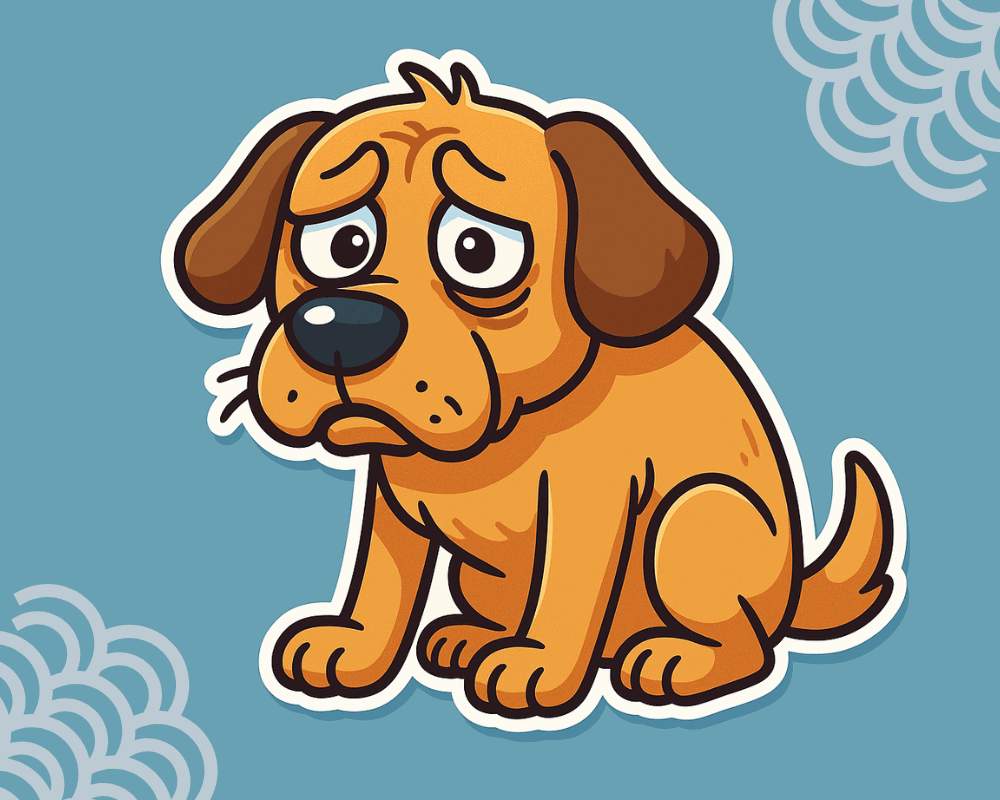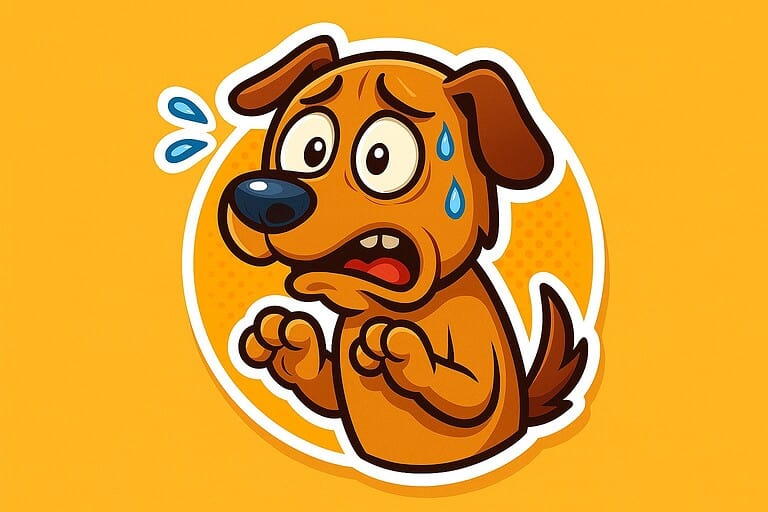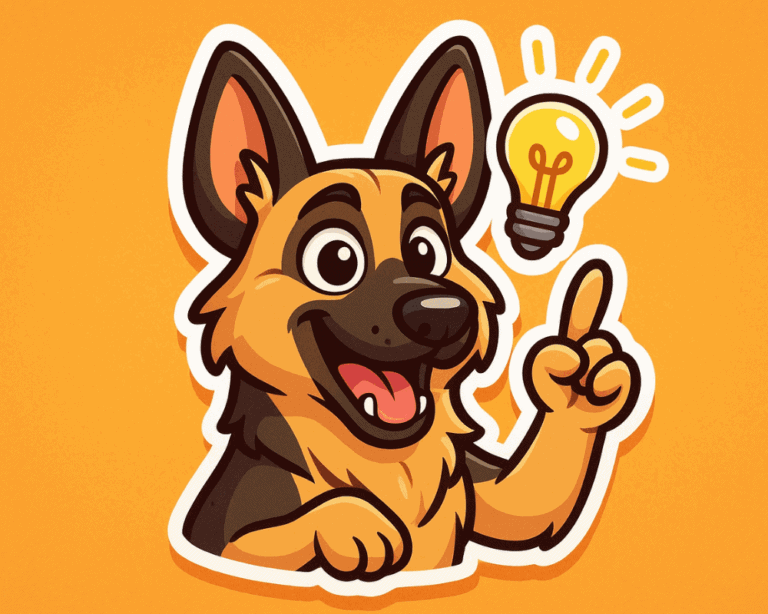11 Everyday Situations That Suddenly Overwhelm Your Senior Dog

Older dogs often need more attention in everyday life than their younger counterparts. Situations that used to be no big deal can suddenly trigger stress. You can help your senior dog by recognizing when he’s overwhelmed and responding accordingly.
A lot changes for dogs as they age — perception and resilience decrease. What used to be fun can now become too much. If you notice that, you can create safe retreats and adjust your older dog’s daily routine to make life easier for him.
1) Sudden loud noises
Older dogs are often more sensitive to sudden, loud noises. Fireworks, sirens, or construction noise can really throw them off.
Your dog’s hearing is much more acute than yours. What you consider loud can actually be painful for him. Over the years, dogs lose the ability to shrug off stress as easily as they used to.
Watch for signs like trembling, panting, or hiding — these usually point to overwhelm. Give your dog the option to retreat when there’s a lot of noise.
A quiet retreat helps. Heavy curtains or soft music can dampen the noise a bit. If you stay calm, your dog will pick up on that and feel safer.
Especially on New Year’s Eve or during other loud events, you should plan ahead. Noise-sensitive dogs need extra support at those times.
2) Environments with lots of people
Older dogs often struggle with crowds. In busy pedestrian areas or at street markets, many senior dogs quickly show signs of being overwhelmed.
All the sounds, smells, and hectic movement can confuse them. With age-related hearing loss, they startle even more easily at sudden encounters.
If your dog is panting, trembling, or just wants to get away, that’s a clear sign of sensory overload.
Choose quieter times and places for walks. There are always alternatives that will help your dog feel safer as he ages.
Give your dog time to get used to new situations. A safe retreat helps when things get to be too much.
3) Unfamiliar places without familiar retreats
Older dogs are creatures of habit. New places without their known spots can easily overwhelm them.
At home, your dog has his established safe places where he can relax and withdraw. If those are missing in unfamiliar locations, his stress level rises.
Pay attention to how your dog reacts when you’re out and about. Does he suddenly stop and refuse to go on? The new environment might simply be too much.
Pack a familiar blanket or his favorite toy — that provides a sense of security.
Plan outings to new places thoughtfully. Give your pet a sense of security through your calm demeanor and allow for breaks along the way.
4) Too many new smells in a tight space
A flood of smells in a small space can quickly overwhelm older dogs. Their sense of smell stays sharp, but they don’t process input as well anymore.
In dog training classes, pet expos, or busy parks, you may notice your dog seems overwhelmed — he gets restless, pants, or tries to get away.
Introduce new, scent-heavy situations slowly. Let your dog explore the environment at his own pace.
Typical stress signals include yawning, lip-licking, or turning away. That means he needs a break.
Provide quiet retreats where your dog can recover when it all becomes too much.
5) Unexpected contact with unfamiliar dogs
Sudden encounters with unfamiliar dogs stress many older pups. They often don’t feel as fit or confident as they once did.
If a strange dog rushes up to your senior, it can quickly lead to stress. Your dog may respond with fight or flight.
Watch the body language: trembling, panting, tucked tail — those are warning signs.
Protect your dog from overly boisterous dogs. Politely ask other owners to call their dogs back or put them on a leash.
After bad experiences, some seniors develop aggressive behavior during dog encounters. That’s often due to insecurity.
Walks at quieter times and in places with fewer dogs take a lot of pressure off.
6) Long car rides without breaks
On car trips, older dogs need regular breaks. Long stretches without stops can quickly overwhelm them — joints get stiff, and sitting becomes painful.
Older dogs also need to go out more often because bladder control can decline. It never hurts to check in with your vet before longer trips.
Start with short drives and gradually increase the duration so your dog can get used to them. Make the car comfy — a soft pad is worth its weight in gold.
You should stop every 1–2 hours. Movement, water, and a bit of fresh air do wonders. Retreat options in the car help reduce stress.
7) Walks that are too short or too long without adjustment
Older dogs need an exercise routine that suits them. Walks that are too long can quickly overwhelm your senior and strain his joints. On the other hand, walks that are too short often don’t provide enough stimulation.
Watch your dog’s body language while out on a walk. Signs of overwhelm include suddenly slowing down, heavy panting, or wanting to sit down more often.
Simply base the length and pace of your walks on your dog’s daily condition. There are fit days, and other days when he needs more rest — that’s totally normal.
Several short outings are usually more comfortable for seniors than one long trek. Opt for a few small loops instead of a big one — it’s easier on the joints while still keeping them fit.
Keep an eye on the weather when walking your old dog. In extreme heat or cold, his body is more sensitive, so adjust as needed or skip a walk if necessary.
8) Excessive heat or cold
Older dogs don’t handle temperature swings as easily as younger ones. They adapt more slowly and reach their limits faster.
In summer, your senior can overheat quickly. Always provide fresh water and make sure there are shady spots where he can rest.
Cold is tough on many gray muzzles. Their metabolism slows, and they get cold faster. You might notice your dog only wants to lie outside or is behaving differently.
Protect your senior from weather extremes by adjusting walks. Go out early or late in the heat; in the cold, a coat can help.
Warning signs like shivering, labored breathing, or restlessness show your dog is struggling with the temperature. Then you should act quickly.
9) Difficult stairs without aids
Stairs often become a real problem for older dogs. The symptoms usually creep up — your dog needs more time, may even stop, or barks because he doesn’t know what to do next.
Watch whether your dog hesitates or seems unsure before taking the steps. That can be pretty frustrating — for both of you.
Without aids, the risk of him slipping or getting hurt increases. Many owners can’t just carry their large dogs when it’s no longer possible for them.
A support harness for stairs can really help. It gives your dog security and eases the load on you when going up and down.
If problems with stairs arise suddenly, have your dog examined. There may be more going on, and there could be suitable therapies.
- ✔ PREMIUM QUALITÄT: hochwertiger Tannenholzrahmen Robust und langlebig, kann ein Gewicht von 80 kg tragen. Geeignet für die meisten Haustiere.
- ✔ RUTSCHFESTE HAUSTIERRAMPE – Die raue und rutschfeste Oberfläche der Autorampe kann verhindern, dass Tiere verrutschen, und selbst wenn sie gekippt ist,…
- ✔ Einstellbare Höhe: 70 cm Rampe mit 2 Höheneinstellungen, 100 cm Rampe mit 4 Höheneinstellungen, einfach auf die passende Höhe einzustellen.
- ✔ Faltbares tragbares Design: Die Rampe kann flach zusammengeklappt werden, um sie einfach zu transportieren und aufzubewahren. Erhöhte Kanten verhindern,…
- ✔ Anwendung Nachdem die Haustier-Hunderampe geöffnet wurde, kann sie als Rampe oder als Stufe verwendet werden, um Hunden und Haustieren zu helfen, sich…
Letzte Aktualisierung am 24.10.2025 / Affiliate Links / Bilder von der Amazon Product Advertising API
10) Sudden changes in the daily routine
Old dogs are very attached to their routines. If you suddenly change everything, it can quickly lead to stress.
The daily routine gives your dog stability. Don’t change your schedule overnight, because older dogs in particular need consistent structure.
If you want to change something, do it slowly. Too many changes at once aren’t good for him. Some dogs respond with stress, confusion, or may suddenly start having accidents again.
Keep feeding, walk, and rest times as consistent as possible. That gives your senior a sense of security and reduces uncertainty.
If you do have to adjust something, guide your dog patiently. A little extra attention or a few cuddles help him settle in better.
11) flickering TV or harsh lights
Intense visual stimuli are often tough on older dogs. The flicker of a TV confuses many dogs because they perceive images differently than we humans do.
Every dog reacts differently to screens. Some ignore the TV completely, others get nervous or even leave the room. Watch for restlessness or withdrawal.
Bright, flashing, or blinking decorations can also be stressful. The balance system in older dogs is often more sensitive — orientation issues are not uncommon.
Create a quiet corner with dimmed light where your dog can switch off when it gets to be too much.
And don’t forget: dogs don’t see colors as vividly as we do. Movement and contrast matter more to them than colorful details.
Why older dogs react more sensitively to everyday situations
Your dog changes with age — physically and mentally. Suddenly, everyday situations that used to be no problem become real challenges. That can be hard to accept, but it’s unfortunately quite normal.
Physical changes with age
Older dogs often have various physical limitations that affect their daily lives. Their senses decline — probably one of the most noticeable changes. Many seniors suffer from age-related hearing loss and don’t respond to cues as reliably as they used to.
Vision also deteriorates. Your dog has a harder time recognizing obstacles or may startle when someone approaches suddenly.
Fitness declines, body fat increases, and muscle mass decreases. That makes movement and standing for long periods more strenuous.
Typical age-related physical changes:
- Weaker hearing and vision
- Reduced mobility and stamina
- Painful joints (arthritis)
- Slower reaction times
Effects of stress and insecurity
Older dogs often react much more sensitively to changes. What they used to handle easily can now throw them off balance.
Hormones change with age, and many dogs can’t process stress as well. You may notice your dog seems stressed more quickly and simply needs longer to calm down again.
Memory declines in many seniors. It can happen that even familiar places or people suddenly feel unfamiliar — almost as if they’ve forgotten everything for a moment.
Keep in mind: behavioral issues can increase if your dog is struggling with his daily life. Even seemingly simple things like peeing outside or eating calmly can become challenging.
Many older dogs find stability in a fixed daily routine. Even small, unexpected changes can unsettle them.
Practical tips to support your senior
Your older dog needs more attention and care tailored to him. With a few simple steps, you can make his life much more comfortable.
Adapting daily life to the needs of older dogs
Give your dog cozy resting spots with padded, supportive bedding. That helps with joint pain and promotes relaxation. Choose quiet corners in your home for these spots.
Non-slip mats are really important on smooth floors. They give your dog traction and prevent slips.
Place food and water bowls slightly elevated. That way your dog doesn’t have to bend his head as much, which helps especially with neck or back pain.
A structured daily routine gives your dog a sense of security. Stick to set times for meals, short walks, and rest breaks.
Adjustments for more comfort:
- Use ramps instead of stairs
- Make favorite spots easier to reach
- Use bowls with higher sides to make eating easier
- Have warm blankets ready on cold days
Communication and patience in everyday life
Observe how your dog’s behavior changes. He may not see or hear as well anymore, so sometimes he reacts differently than before. Try to adapt how you communicate.
Clear, simple hand signals help alongside your words. That way your dog can understand you better, even as his senses weaken.
Engage your older dog with activities that suit him. Short, simple exercises keep his mind sharp and strengthen your bond. But don’t overdo the difficulty — better to increase slowly.
Give him more time to respond. Many older dogs need longer to process new things or react to stimuli. That’s normal.
Remember to schedule regular little breaks. These rest periods help ensure he doesn’t overdo it and can recover.






